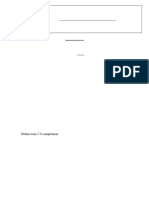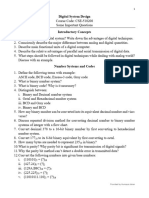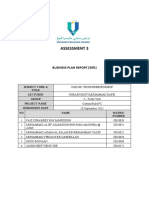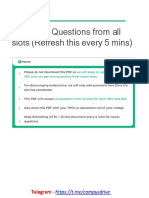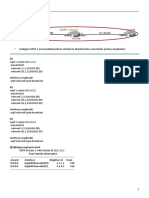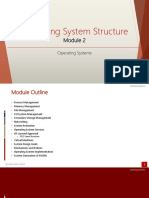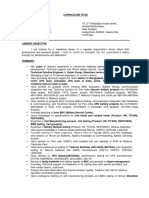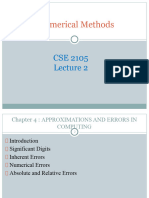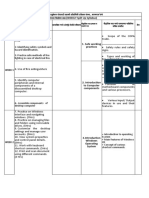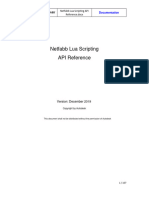DTE IMPQ by Campusify (1)
DTE IMPQ by Campusify (1)
Uploaded by
mrscollege235Copyright:
Available Formats
DTE IMPQ by Campusify (1)
DTE IMPQ by Campusify (1)
Uploaded by
mrscollege235Copyright
Available Formats
Share this document
Did you find this document useful?
Is this content inappropriate?
Copyright:
Available Formats
DTE IMPQ by Campusify (1)
DTE IMPQ by Campusify (1)
Uploaded by
mrscollege235Copyright:
Available Formats
DTE
IMP QUESTION
Join Our Telegram Channel to get Total Free Engineering
Study Material
JOIN - https://t.me/campusifyy
SITE - https://www.campusify.co.in/
Downloaded From Campusify!
Program : Computer Engineering Group Program code : CM
Course Title: Digital Technique Semester : Third
Course Abbreviation & Code: DTE (313303) Scheme : K
CHAPTER 1: Number Systems
2 marks
1. Write the base of the following number systems: Decimal, Binary, Octal, and Hexadecimal.
2. Give two applications of EX-OR and EX-NOR gates each.
3. List the binary, octal and hexadecimal numbers for decimal no. 0 to 15
4. Draw the logical symbol of EX-OR and EX-NOR gate.
5. Convert the following binary number (11001101)2 into Gray Code and Excess-3 Code.
6. Define 1’s and 2’s Complement of Binary Number with example.
7. Define 9’s and 10’s Complement of Binary Number with example.
8. Convert the following Binary number into Gray code.
(i) 1111
(ii) 1101001
4 marks
1. Convert the following:
i)(5C7)16=(?)10
ii)(2598)10 = (?)16
iii)(10110)2 = (?)10 = (?)16
2. Perform the following subtraction using 1’s and 2’s
complement method:
i)(52)10 – (65)10
ii)(101011)2 – (11010)2
3. Perform the following subtraction
(i) Perform the BCD Addition. (17)10 + (57)10
(ii) Perform the binary addition. (10110.110)2 + (1001.10)2
Downloaded From Campusify!
CHAPTER 2: Logic Gates and Boolean
Algebra2 marks
1. Define following characteristics of logic families :
a. Propagation Delay
b. Noise Margin
2. State commutative and associative laws for the binary numbers.
3. Define fan-in and fan-out of a gate.
4. Draw the Symbol and write the Truth Table of Universal Gates.
4 marks
1. For the given figure No. 1, derive the Boolean expression of Y.
1. Figure No. 1
2. Realize the following logic operations AND and OR using NAND and NOR gates only
3. Compare TTL and CMOS logic families on the basis of following:
a. Propagation delay
b. Power dissipation
c. Speed of operation
d. Basic gates
4. State and prove De Morgan’s Theorems.
5. Reduce the following Boolean expression using Boolean laws.
6. Design EX-OR and EX-NOR gates using NAND and NOR gate.
Downloaded From Campusify!
CHAPTER 3: Combinational Logic Circuits
2 marks
1. Draw three variable K-map formats.
2. State the necessity of multiplexer.
3. Draw Block diagram of 4:1 Multiplexer and write its truth table.
4. Identify function of following ICs. (i) 74244(ii) 74245.
5. Write simple example of Boolean expression for SOP and POS.
6. Draw two variable K-map format.
7. Define term Multiplexer and Demultiplexer.
8. Explain the terms Encoder and Decoder.
9. Draw diagram for 4:2 Priority Encoder.
4 marks
1.
Minimize the following expression
using K-map. F (P, Q, R, S) = Σ m (0, 1, 4,
5, 7, 8, 9, 12, 13, 15).
2. Simplify the following Boolean Expression and Implement using
logic gate.AB ̅ ̅ + AB ̅D + ABC ̅ + ABCD
3. Describe the function of Half Substractor Circuit using its truth table, K-Map
simplificationand logic diagram.
4. Describe the function of full Adder Circuit using its truth table, K-Map simplification
and logicdiagram.
5. Design BCD Adder using IC 7483
6. Reduce the following expression using K-map and
implement it.a. F(A,B,C,D ) = M (1,3,5,7,8,10,14)
7. Design Gray to Binary converter.
8. Draw the circuit diagram of BCD to 7 segment decoder and write its truth table.
9. Give the function of the following terminals of IC 7447.
a. LT ii) RBI iii) BI iv) RBO
10. Realize the following function using:
I)F1 = Σ m (1, 2, 5, 6, 7,11)
II)F2 = π M (0, 1, 2, 5, 6, 7, 8, 11, 12, 15)
10. Difference between demultiplexer and Decoder.
11. Explain with example MUX tree.
12 List out Applications of Mux & Demux.
13. Implement 4:2 Mux using 2:1 Mux and OR gate.
Downloaded From Campusify!
CHAPTER 4: Sequential Logic Circuits (CO4)
2 marks :-
1. Draw symbol and write the truth table of JK flip flop.
9.Write excitation table of D flip flop.
10. Draw Block schematic of IC 7490.
11. Explain the triggering methods used for digital circuits.
12. Define modulus of a counter? Write down the number of flip flops required for
mod-5 counter?
4 marks:-
13. Describe the operation of 4- bit universal shift register with the help of block diagram.
14.Describe the working of Master-Slave JK Flip-Flop with Truth Table and Logic diagram.
15.Describe the procedure to design MOD-6 counter using IC 7490 in brief.
17. Describe the operation of 4 bit SISO shift register with the help of block diagram, truth
table and timing diagram.
18. Describe Race Around condition and how can it be eliminated.
19. Describe the operation of 3 bit synchronous up counter with Truth Table and Logic
Diagram.
20. Draw the Logic Diagram, Truth Table and waveforms of 3 bit twisted Ring counter.
21. Draw logic diagram and truth table of T Flip – Flop.
22. Compare between Combinational and Sequential Circuits
CHAPTER 5 Data Converters And PLDs (CO5)
2 marks:-
23. List any two specifications of IC- DAC 0808.
24. Give two applications of DAC and ADC each.
25. State any two applications of PLA’s.
26. Define Flash memory.
27. Compare Static RAM and Dynamic RAM.
4 marks:-
28. Draw the block diagram of Programmable Logic Array.
29. Describe the operation of CPLD with the help of block diagram.
30. Calculate analog output of 4 bit DAC for digital input is 1011. Assume VF S= 5V.
31. Describe the working principle of R – 2R ladder with neat diagram.
32. Describe the working principle of Successive approximation type ADC with the help
of block diagram.
Downloaded From Campusify!
You might also like
- Exploring BeagleBone: Tools and Techniques for Building with Embedded LinuxFrom EverandExploring BeagleBone: Tools and Techniques for Building with Embedded LinuxRating: 4 out of 5 stars4/5 (1)
- Dte ImpDocument5 pagesDte ImpDanish SheikhNo ratings yet
- QB U1 (Notes) (Bhartimumbai)Document3 pagesQB U1 (Notes) (Bhartimumbai)shravanikota54No ratings yet
- Iotmumbai Dte QB 070818Document3 pagesIotmumbai Dte QB 070818suryawanshimayur231No ratings yet
- Question Bank Subject Code: Ec6302 Subject: Digital Electronics Sem / Year: Iii / Ii-Ece Unit-I Minimization Techniques and Logic Gates Part-ADocument3 pagesQuestion Bank Subject Code: Ec6302 Subject: Digital Electronics Sem / Year: Iii / Ii-Ece Unit-I Minimization Techniques and Logic Gates Part-AmohanaNo ratings yet
- DLD Question BankDocument5 pagesDLD Question BankHarshad ThiteNo ratings yet
- Question Bank 2(Dte)Document2 pagesQuestion Bank 2(Dte)siddeshmachaleNo ratings yet
- Digital Electronics QB 2015-RDocument8 pagesDigital Electronics QB 2015-RKeerthe VaasanNo ratings yet
- DTE - 313307 - Question BankDocument5 pagesDTE - 313307 - Question Bankshelkepravin8080No ratings yet
- EE6301 DLC Question Bank Rejinpaul 2Document8 pagesEE6301 DLC Question Bank Rejinpaul 2aruljothiNo ratings yet
- EC2203 U Q BankDocument12 pagesEC2203 U Q Bankvlsi_satheeshNo ratings yet
- EE6301 QB FinalDocument21 pagesEE6301 QB FinallithijanarNo ratings yet
- DTE important questions 22320Document3 pagesDTE important questions 22320gr7226485No ratings yet
- Digital Electronics QBDocument7 pagesDigital Electronics QBvinaytmkNo ratings yet
- Digital Electronics Question BankDocument6 pagesDigital Electronics Question BankReshna ShowkathNo ratings yet
- Question Bank: Ec6302 Digital ElectronicsDocument14 pagesQuestion Bank: Ec6302 Digital ElectronicsBarry SmithNo ratings yet
- Question Bank deDocument6 pagesQuestion Bank deshanunpn0No ratings yet
- DF - Question BankDocument6 pagesDF - Question Bankjignasha.patelNo ratings yet
- EC 6302 2-Marks and 16 Marks QuestionsDocument12 pagesEC 6302 2-Marks and 16 Marks QuestionsskaruppaiaheceNo ratings yet
- PUEC3TL02 Question BankDocument11 pagesPUEC3TL02 Question Bankprasanna5002No ratings yet
- Digital ElectronicsDocument7 pagesDigital ElectronicsAlakaaa PromodNo ratings yet
- Sample Question Paper Digital Techniques PDFDocument5 pagesSample Question Paper Digital Techniques PDFAshutosh PatilNo ratings yet
- EC6302 Digital ElectronicsDocument12 pagesEC6302 Digital ElectronicsJabeen BanuNo ratings yet
- Digital Principles and System DesignDocument24 pagesDigital Principles and System Designhelloworld1000% (3)
- De & M Model QuestionsDocument4 pagesDe & M Model Questionsvishalkushwaha10203040No ratings yet
- Digital System Design: Provided by Humayra JahanDocument5 pagesDigital System Design: Provided by Humayra JahanZabirNo ratings yet
- Deco QB 23-24 MainDocument9 pagesDeco QB 23-24 Mainsyedizaan9876No ratings yet
- 2EC6302-Digital Electronics QBDocument12 pages2EC6302-Digital Electronics QBSurendar PNo ratings yet
- A.R. Engineering College, Villupuram Ece Department: Ec2203/Digital ElectronicsDocument8 pagesA.R. Engineering College, Villupuram Ece Department: Ec2203/Digital ElectronicsNitu VlsiNo ratings yet
- Ec2203 Digital ElectronicsDocument8 pagesEc2203 Digital ElectronicspappujayaNo ratings yet
- EC8392_DEDocument13 pagesEC8392_DEGAYATHRI RNo ratings yet
- DLD GTU Question Bank: Chapter-1 Binary SystemDocument5 pagesDLD GTU Question Bank: Chapter-1 Binary Systemnirav34No ratings yet
- EC6302-Digital ElectronicsDocument14 pagesEC6302-Digital Electronicsmagy1989No ratings yet
- Ec1312 QBDocument7 pagesEc1312 QBGopinathan MuthusamyNo ratings yet
- EE6301-Digital Logic Circuits QBDocument7 pagesEE6301-Digital Logic Circuits QBariv2009No ratings yet
- CS2202 QBDocument8 pagesCS2202 QBsoundar23No ratings yet
- FAQs - CS1202 Digital Principles and System DesignDocument13 pagesFAQs - CS1202 Digital Principles and System DesignsridharanchandranNo ratings yet
- DPSDDocument16 pagesDPSDDhilip PrabakaranNo ratings yet
- DPSDDocument24 pagesDPSDdigital1206No ratings yet
- DellDocument6 pagesDellamu_manuNo ratings yet
- Questions Combinational CircuitDocument2 pagesQuestions Combinational CircuitVigneswaran VigneshNo ratings yet
- Dte QBDocument54 pagesDte QBitachisan973No ratings yet
- official DDCO QBDocument6 pagesofficial DDCO QBtahmad8651No ratings yet
- Questions From 10 Question Papers: Module 1: Number Systems and CodesDocument4 pagesQuestions From 10 Question Papers: Module 1: Number Systems and Codesvidhya seemanNo ratings yet
- AssignmentDocument3 pagesAssignmentgaming0rascalNo ratings yet
- Deco Question Bank Main111Document6 pagesDeco Question Bank Main111md.ashwaq.2609No ratings yet
- DPSD ImpDocument8 pagesDPSD ImpGanesamoorthyNo ratings yet
- Ec6302 - Digital Electronics Question Bank Unit - I Minimization Techniques and Logic GatesDocument12 pagesEc6302 - Digital Electronics Question Bank Unit - I Minimization Techniques and Logic GatesSurendar PNo ratings yet
- The Elements of Computing Systems, second edition: Building a Modern Computer from First PrinciplesFrom EverandThe Elements of Computing Systems, second edition: Building a Modern Computer from First PrinciplesNo ratings yet
- Programmable Logic Controllers: A Practical Approach to IEC 61131-3 using CoDeSysFrom EverandProgrammable Logic Controllers: A Practical Approach to IEC 61131-3 using CoDeSysNo ratings yet
- Build Logic Gates with Universal NAND: CMOS and TTL in ActionFrom EverandBuild Logic Gates with Universal NAND: CMOS and TTL in ActionNo ratings yet
- Digital Electronics 2: Sequential and Arithmetic Logic CircuitsFrom EverandDigital Electronics 2: Sequential and Arithmetic Logic CircuitsRating: 5 out of 5 stars5/5 (1)
- C Programming for the Pc the Mac and the Arduino Microcontroller SystemFrom EverandC Programming for the Pc the Mac and the Arduino Microcontroller SystemNo ratings yet
- Digital Signal Processing Using the ARM Cortex M4From EverandDigital Signal Processing Using the ARM Cortex M4Rating: 1 out of 5 stars1/5 (1)
- SiP System-in-Package Design and Simulation: Mentor EE Flow Advanced Design GuideFrom EverandSiP System-in-Package Design and Simulation: Mentor EE Flow Advanced Design GuideNo ratings yet
- Advanced Chipless RFID: MIMO-Based Imaging at 60 GHz - ML DetectionFrom EverandAdvanced Chipless RFID: MIMO-Based Imaging at 60 GHz - ML DetectionNo ratings yet
- Physics and Technology of Crystalline Oxide Semiconductor CAAC-IGZO: Application to DisplaysFrom EverandPhysics and Technology of Crystalline Oxide Semiconductor CAAC-IGZO: Application to DisplaysNo ratings yet
- Embedded Software Design and Programming of Multiprocessor System-on-Chip: Simulink and System C Case StudiesFrom EverandEmbedded Software Design and Programming of Multiprocessor System-on-Chip: Simulink and System C Case StudiesNo ratings yet
- Tips For Creating A Video ResumeDocument4 pagesTips For Creating A Video ResumeVikrant JainNo ratings yet
- MERE5001-Module 3 - Systems EngineeringDocument22 pagesMERE5001-Module 3 - Systems EngineeringCedric Dela CostaNo ratings yet
- Class7 Midterm Paper 2023AGAINDocument3 pagesClass7 Midterm Paper 2023AGAINShaista JavedNo ratings yet
- Windows 7 AktivatesDocument7 pagesWindows 7 AktivatesArifin Qurrota A'yunNo ratings yet
- MA300-BT: Metallic Casing Outdoor Access ControlDocument2 pagesMA300-BT: Metallic Casing Outdoor Access ControljoelbravobritoNo ratings yet
- Community: Likes and Followers For June and July 2020Document3 pagesCommunity: Likes and Followers For June and July 2020DexterJohnN.BambalanNo ratings yet
- 5620-Sam E2e Lte enDocument19 pages5620-Sam E2e Lte enVin VenNo ratings yet
- Exercise 01 As Chapter Assembly (2 Point) Ex1:. ADD: Will Store The Remainder To Destination SUB: Will Store The Remainder To Destination MulDocument4 pagesExercise 01 As Chapter Assembly (2 Point) Ex1:. ADD: Will Store The Remainder To Destination SUB: Will Store The Remainder To Destination MulKenner GamingNo ratings yet
- Business Plan ReportDocument58 pagesBusiness Plan Reportazam alfikriNo ratings yet
- TCS NQT Questions From All Slots (Refresh This Every 5 Mins)Document59 pagesTCS NQT Questions From All Slots (Refresh This Every 5 Mins)G.V.M PraveenNo ratings yet
- How Q To Use The Psychology of Color To Increase Website ConversionsDocument22 pagesHow Q To Use The Psychology of Color To Increase Website ConversionsMaganorak AngolNo ratings yet
- OSPF Básico: Guía Huawei R&S v2.0Document8 pagesOSPF Básico: Guía Huawei R&S v2.0Juan MartinezNo ratings yet
- Proprietary and ConfidentialDocument1 pageProprietary and ConfidentialJack WangNo ratings yet
- DRS Functionality Impacted by Unhealthy State of The Vsphere Cluster Services (VCLS) (79892)Document5 pagesDRS Functionality Impacted by Unhealthy State of The Vsphere Cluster Services (VCLS) (79892)tes firstNo ratings yet
- OS - Module 2 - Operating System StructureDocument75 pagesOS - Module 2 - Operating System StructureMuhammad Khaleel AfzalNo ratings yet
- FC9000 User's ManualDocument402 pagesFC9000 User's Manuallouis daubardNo ratings yet
- User ManualDocument43 pagesUser ManualpepegoteraszgzNo ratings yet
- CV - Yuvaraj 2022Document5 pagesCV - Yuvaraj 2022Thanh TranNo ratings yet
- Numerical MethodsDocument20 pagesNumerical MethodsTousif MahbubNo ratings yet
- Dissertation - AppleDocument33 pagesDissertation - AppleSayan GaraiNo ratings yet
- Weekly Split UpDocument27 pagesWeekly Split UpRaghunath MaharanaNo ratings yet
- Centrala Telefonica IPECS-MG ConfigurareDocument23 pagesCentrala Telefonica IPECS-MG Configurarepam7164No ratings yet
- 100 Technology FactsDocument18 pages100 Technology FactsPiyush Chavda100% (1)
- Netfabb Lua Scripting API Reference-1Document107 pagesNetfabb Lua Scripting API Reference-1rykennelly1No ratings yet
- Is Term Paper Warehouse LegitDocument8 pagesIs Term Paper Warehouse LegitcpifhhwgfNo ratings yet
- Eplug Revise3Document102 pagesEplug Revise3Zhy ShoneNo ratings yet
- Assignment - 01 Install and Uninstall SoftwareDocument4 pagesAssignment - 01 Install and Uninstall SoftwareThái TrầnNo ratings yet
- Setup and Administration For SAP Cloud ALMDocument98 pagesSetup and Administration For SAP Cloud ALMiliyasmanerNo ratings yet
- AC Mains Monitor: Installation GuideDocument24 pagesAC Mains Monitor: Installation GuideIsac ClaroNo ratings yet
- MB Manual Ga-78lmt-S2-R2 eDocument36 pagesMB Manual Ga-78lmt-S2-R2 eadam.fejfar13No ratings yet









